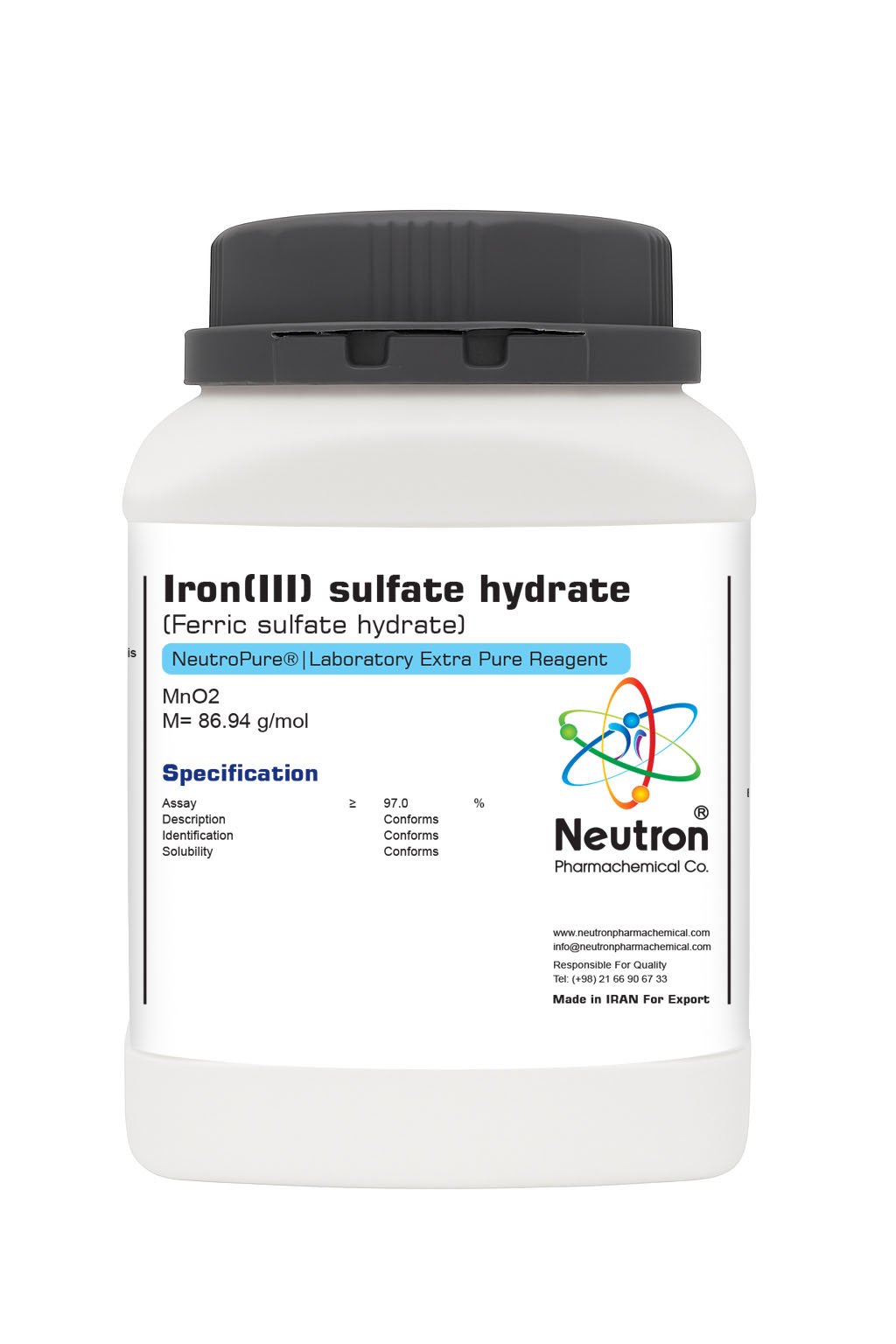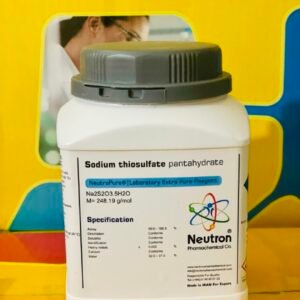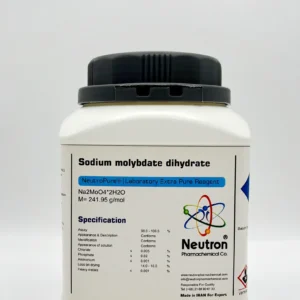آیرون (iii) سولفات هیدرات
| Chemical formula | Fe2(SO4)3*Xh2o |
| Molar mass | 399.88 g/mol anhydrous basis |
| HS Code | 28380000 |
| CAS number | 15244-10-7 |
| Storage | without limitations |
| EC number | 208-754-4 |
| SDS | available |
| RTECS | NO852000 |
| R phrase | P280-P301+P312+P330- |
| S phrase | H290-H302-H315-H318 |
| Assay | ≥ | 97 | % |
| Description | Conforms | ||
| Identification | Conforms | ||
| Solubility | Conforms |
Iron(III) Sulfate Hydrate is an inorganic compound consisting of iron, sulfur, oxygen, and water molecules, commonly encountered in hydrated crystalline forms.
🏭⚗️ Production
Iron(III) sulfate hydrate is typically produced by the reaction of iron metal or iron(III) oxides with sulfuric acid. The reaction yields hydrated iron(III) sulfate crystals, which can be isolated by crystallization from the aqueous solution. Industrially, it can also form as a byproduct in the processing of iron ores or during pickling of steel.
🔬 Properties
Iron(III) sulfate hydrate is usually found as reddish-brown or yellowish crystalline solids, depending on the hydration level and purity. It is soluble in water, forming acidic solutions due to hydrolysis. The compound exhibits typical properties of iron(III) salts, including paramagnetism and a characteristic color. Hydrated forms commonly include multiple water molecules, influencing the crystal structure and stability.
🧪 Applications
Iron(III) sulfate hydrate is used in water treatment as a coagulant to remove impurities and suspended particles. It is also employed in dyeing and printing textiles, in pigment production, and as a mordant in various industrial processes. Additionally, it finds use in analytical chemistry as a reagent and in some agricultural applications to correct iron deficiencies in soils.
⚠️ Safety
Iron(III) sulfate hydrate should be handled with care as it can cause skin and eye irritation upon contact. Inhalation of dust may irritate the respiratory tract. It is corrosive to metals and should be stored in a dry, cool environment away from incompatible materials such as strong bases. Appropriate personal protective equipment including gloves, goggles, and masks should be used when handling this compound, and disposal should comply with local environmental regulations.





